Popular games for platform MSX2
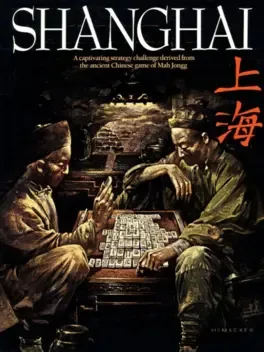
Shanghai is a computerized version of mahjong solitaire. After winning a game, the tiles reveal the three-dimensional blinking eye of a dragon behind the game screen. The Macintosh and Sega Master System version shows an animated dragon spitting fire.

Metal Gear 2: Solid Snake is an action-adventure stealth video game created and published by Konami for the MSX2 computer platform. Acting as a direct continuation of the MSX2 version of the original Metal Gear, it was written and designed by the series' creator, Hideo Kojima. Kojima's inspiration for this game arose as a response to the development of Snake's Revenge, a separate sequel being produced simultaneously for the NES, intended primarily for the North American and European markets.
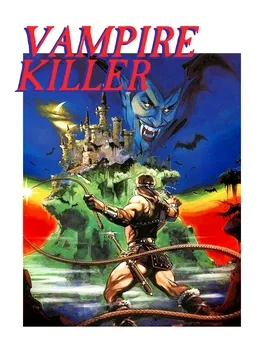
Vampire Killer is a side-view flick-screen game where you are a Vampire hunter who has been tasked to remove Dracula from the 12th floor of a block of flats by a client on the floor below. The problem is, as well as facing and killing a vampire, the job has to be completed before midnight which is only eight minutes away. In your rush to get to the building you have forgotten your equipment like garlic and stakes, which is needed to face Dracula. You have to get to the 12th floor using elevators (which have minds of their own and can take you down as well as up), and you must look behind the doors of each flat for equipment to help you. Some flats are also empty as well as flats that have scares inside you and when scared, you lose part of a shock meter and when it reaches zero then it is game over. Bats and spiders live on various floors with some blocking your route so bullets can be found in the flats to clear the way. Some doors to the flats actually are lift shafts which send you back down to the 1st floor. Before you play the game you can select your skill level from easy, medium and hard.
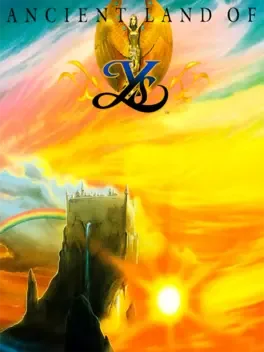
The hero of Ys is an adventurous young swordsman named Adol Christin. As the story begins, he has just arrived at the Town of Minea, in the land of Esteria. He is called upon by Sara, a fortuneteller, who tells him of a great evil that is sweeping the land. Adol is informed that he must seek out the six Books of Ys. These books contain the history of the ancient land of Ys, and will give him the knowledge he needs to defeat the evil forces. Sara gives Adol a crystal for identification and instructs him to find her aunt in Zepik Village, who holds the key to retrieving one of the Books. With that, his quest begins.
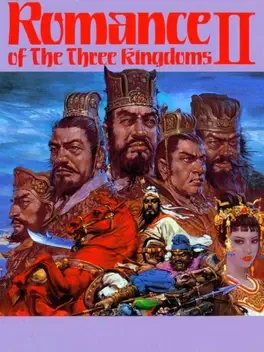
The player takes control of a master, a general capable of commanding as many states as he can acquire, and, if successful, unifies China. As many as eight may play, but only one can succeed. There are five chronologically arranged scenarios. The first has China in its most disorganized period and the last has virtually all of China controlled by one of three generals. The precise requirements for success in each of these scenarios differs, but in all cases the goal is to rule as many states as possible. After the completion of any scenario but number five the game will automatically advance to the next. You may start the game at any scenario.
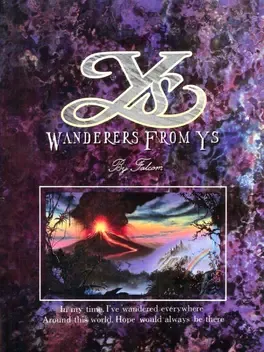
Adol Christin's long-time friend, Dogi, wishes to return to his home town of Redmont after hearing about strange disturbances that are happening there. Always looking for an adventure, Adol joins him and soon finds out the cause of this new evil. Ys III: Wanderers from Ys breaks away from the "bumping into enemies" battle system of the first two games, allowing Adol to control his sword in a variety of directions. Beside changing the battle system, the game's perspective switches to a side-scrolling view, as opposed to the top-down one of the previous games. Adol also has the ability to jump now. New to the series is the use of magical rings, which give Adol different powering-up abilities such as healing and shielding. The game also uses various key items found along the way to solve minor puzzles and progress the story.
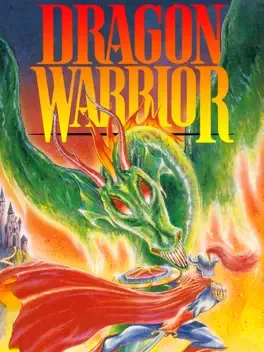
All is darkness. The Dragonlord has captured the Princess and stolen Erdrick's powerful ball of light. You are Erdrick's heir. To you has fallen the most dangerous task— to rescue the King's daughter and recover the mystical ball of light. Your mission is deadly, but it is your fate. Prophets have foretold your coming. Three keepers await your journey, each ready to aid you with a mystic item of great power. Gather the three objects. Scribes will record your deeds. Use cunning and wisdom to choose your commands. Gain experience, weapons and armor as you battle your way through the world. Rest if you must. Search out the Dragonlord's lair and face your destiny. In this role-playing adventure, you are the Dragon Warrior!
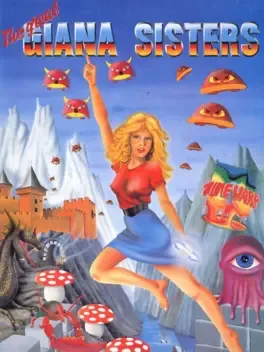
The Great Giana Sisters is a side-scrolling platform game originally released in 1987 for various home computers. Players control Giana, navigating through levels filled with enemies, hazards, and hidden items. The goal is to reach the end of each stage by jumping across platforms and avoiding obstacles. Power-ups, such as the ability to break blocks or shoot projectiles, aid in progression. The game is known for its strong resemblance to Super Mario Bros. in both gameplay and design.

Metal Gear is considered to be the progenitor of the stealth game genre, it was also the first video game designed by Hideo Kojima, who also directed many of the later Metal Gear sequels. The game revolves around a special forces operative codenamed Solid Snake who goes into a solo infiltration mission into the fortified state of Outer Heaven to destroy Metal Gear, a bipedal walking tank capable of launching nuclear missiles from anywhere in the world. The player must navigate the main character, a military operative codenamed Solid Snake, through various locations, while avoiding visual contact and direct confrontation with patrolling guards. If the player is seen, the game enters the "Alert Mode." In this situation, Snake must escape from enemy's sight in order to resume infiltration. The method of escaping varies depending on the circumstances behind discovery: If Snake is seen and only a single exclamation mark appears over an enemy's head, only the enemies in the player's present screen will attack and Snake can escape by simply moving to an adjacent screen. However, if two exclamation marks appear over the enemy (or the player triggers an alarm by being spotted by a camera, infrared sensor or by using an unsuppressed weapon), reinforcements from off-screen will appear as well. Snake can only escape by eliminating all incoming enemies, going outdoors, or by entering an elevator. The player starts the game unarmed, but eventually acquires firearms such as a Beretta 92F and an M79 grenade launcher, as well as explosives such as remote control missiles and landmines. Ammo and supplies for weapons are limited, but are replenished by picking up ammunition caches or additional supplies. Weapons can not only be used to kill enemies, but also to clear obstacles such as hollow walls and electrified floors. Snake can also use his fists to punch and defeat patrolling enemies. Occasionally, if the player defeats a guard with punches without alerting anyone, the defeated guard will yield a single unit of rations or an ammo box that can be picked up. In addition to enemy guards, the player will also be confronted by mercenaries who will challenge the player to combat, serving as the boss characters. The enemy base consists of three different buildings, with multiple floors (including basement levels) within them. The player uses key cards and other items to unlock doors and explore new areas. Each door will only open to its corresponding key cards. Information can be obtained by rescuing hostages being held within the buildings. After rescuing five hostages, the player's rank will increase by one star (with the maximum rank being four stars), allowing for increased carrying capacity and maximum health. However, if a hostage is killed, the player is demoted to the previous rank. A transceiver is available for the player to communicate with their commanding officer, Big Boss, or one of the resistance members operating covertly near Outer Heaven (Schneider, Diane, and Jennifer). Each of Snake's allies specializes in a specific subject. The player must keep track of their allies' frequency numbers in order to contact them. All of the radio messages are dependent on the rooms where the player is located.

Fantasy Zone II: The Tears of Opa-Opa is the sequel to Fantasy Zone, in which you control Opa-Opa, a pretty colored ship with wings on its side. You must destroy the large creatures in each world before moving on to the next. Your task becomes difficult by other small creatures that happen to pass by. If you destroy a large creature, they will drop a dollar bill, which you can pick up and use at the shop to buy items and powerful weapons such as laser beams, x-way shots, and big wings. Another way to get money is to shoot certain kinds of enemies all in a row. More often than not, some large creatures will reveal a warp gate rather than a dollar bill. You can go through the warp gate to get to another part of the land, and destroy more large creatures. Only one of them will have a warp gate in the form of a 'stop' sign - that is your ticket to the round boss, but you must defeat all large creatures in order to pass through it. Also like in the original can you walk on the ground to avoid approaching enemies, and spend money in the shop to get new weapons (but they only last for a limited time).
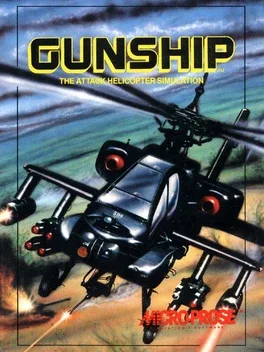
After selection of region, style, and enemies, the pilot is assigned a primary mission and a secondary mission. These could include such objectives as "Destroy enemy headquarters" or "Support friendly troops" (i.e. destroy targets near friendly forces). The latter would be an easier mission, because the battle would be fought closer to friendly lines.
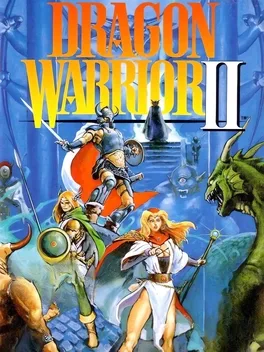
Dragon Warrior II is an early top-down RPG that expands and improves on its predecessor. Unlike the first game, Dragon Warrior II allows the player to join forces with two other characters, a magic-using princess and a wizard-warrior prince. Also including expanded monster battles involving up to 6 creatures and a much larger world, Dragon Warrior II is an important step in the evolution of the Dragon Warrior series.

In this epic role-playing game, you must guide Prince Logan all accross the beautiful and dngerious world of Isrenasa in the quest to regain his throne. This game features a huge world to explore and many companions to join you on your journey. This game features one of the largest quests and most advanced interface of any role-playing game for the TurboDuo system.
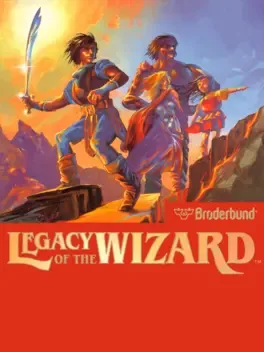
Play as five members of a family that set out to kill a dragon hidden within a giant maze.

The MSX2 home computer port of Square's classic FINAL FANTASY added new and improved graphics, an updated soundtrack and several bug fixes.
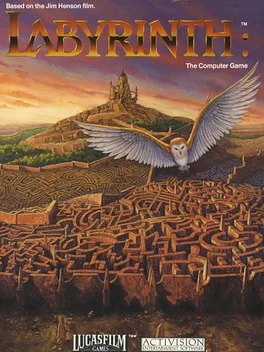
Labyrinth: The Computer Game is a 1986 graphic adventure game developed by Lucasfilm Games and published by Activision. Based on the fantasy film Labyrinth, it tasks the player with navigating a maze while solving puzzles and evading dangers. The player's goal is to find and defeat the main antagonist, Jareth, within 13 real-time hours. Unlike other adventure games of the period, Labyrinth does not feature a command-line interface. Instead, the player uses two scrolling "word wheel" menus on the screen to construct basic sentences.
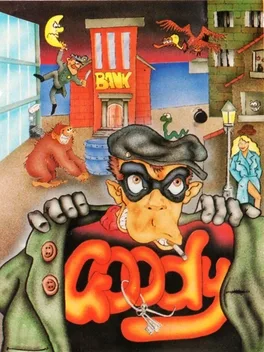

The game is cleared when all the stars are taken. The cracked floor disappears when you pass over it, so you can only pass through it once.

Star Virgins about as obscure as it comes, its a promotional hour long straight to video film from Japan. That was made to promote a little seen videogame of the same name distributed by Activision that only ever appeared on the long forgotten msx system. Plays out pretty much like a bonkers live action anime movie. Its a camp science fiction fantasy comedy about a girl whose secretly the lone fighter of justice Star Virgin, its her pursuit to stop the planet being attacked from robotic & puppet monsters, giant spiders and whatever else would warrant as being an end of level boss in an 80s video game... at least I think thats the overall idea, because its obviously never been translated into English its hard to totally fathom out what the hells going on, but hey thats the beauty of the Japanese movies right. Star Virgin herself is every Japanorama fanboys wetdream, shes a cute pink power ranger with her own spacecraft & powerbike and she kicks ass with a bazooka. The whole thing would have made an awesome music video for The Flaming Lips - Yoshimi Battles the Pink Robots (what I'm oddly playing while writing this). Sure its none essential throwaway stuff, but its a fun hour even without knowing what they're saying. [Personal Reasons For Remembering] Really loved the spacecraft scenes complete with their robotic butler drivers and its not every day I get to see a movie featuring a robotic Statue of Liberty and an evil genius who lives on a floating volcanic island.

D' is a sci-fi survival horror game for one or two players. The story begins with that Louis and Dick are suddenly awakened from the ships's alarm while en route to an important planetary colonization assignment with their space transport ship "Sophia".
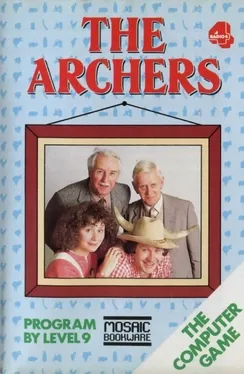

MinQ is an RPG in which a rogue invades the Demon Lord’s castle and defeats monsters and heroes, taking items and defeating the Demon Lord.
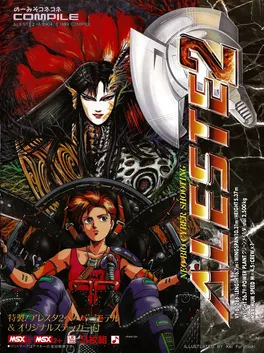
The game takes place in the year 2039, two decades after the super computer DIA51 attacked and decimated the Earth. After the long restoration period, Earth is invaded by a race of alien plant-like humanoids called the Vagand, intent on finding a new food source on Earth. In their first attack on Earth, the Vagand destroys an Earth space cruiser commanded by the previous Earth hero, Ray Waizen. Their plan to invade Earth is challenged by the newest version of the Aleste piloted by the daughter of Ray and Yuri Waizen, Ellinor, who has vowed to avenge her father's death and to personally kill the Vagand leader Gaizel.
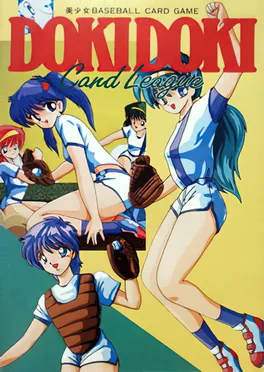
Doki Doki Card League is a turn based, single player, manga card battle, strategy game for baseball enthusiasts.